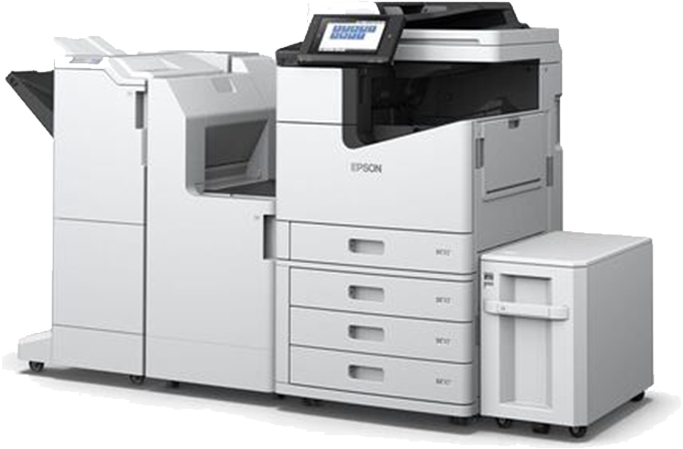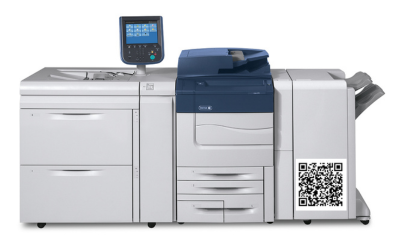Copier Lease
You’ve probably been wondering whether it’s better to buy or lease a copier for your business. You’re not alone in this; many businesses grapple with the same question. This article will help you unravel the mystery around copier leasing, highlighting its benefits and key considerations. We’ll also compare leasing versus buying, providing you with insights to make an informed decision that suits your needs best. So, don’t fret! By the end of this read, you’ll feel part of our savvy community of business owners who’ve mastered copier leasing and are reaping its rewards. Dive right in!
Key Takeaways
- Foresight in copier leases is important for avoiding future problems and ensuring a smooth termination of lease.
- Planning for the end of copier lease terms helps avoid last-minute complications and promotes efficient business operations.
- Informed decision-making in copier leases helps avoid unnecessary expenses and maximizes return on investment.
- Community support in copier leases promotes a supportive and informed business environment, where experiences and insights are shared for mutual benefit.
Understanding Copier Leasing
You’ve probably wondered how copier leasing works, haven’t you? Well, let’s dive right in and unravel the mystery together. Just imagine a club where everyone gets access to top-notch office equipment without having to buy it outright. In this club, lease negotiation is key; it’s about finding agreeable contract terms that fit your needs like a glove. It’s not just about cost but also service agreements, upgrade options, and termination clauses. The goal is for you to feel secure and valued within our community of lessees. Now that we’ve shed some light on the process, doesn’t it seem less daunting? Great! Let’s now explore how belonging to such a community comes with its own set of benefits when leasing a copier.
Benefits of Leasing a Copier
Opting for a rental agreement on your office equipment brings about several perks worth considering. You become part of a savvy business community that understands the benefits of leasing a copier, rather than shelling out large capital for purchase.
The foremost advantage to appreciate is lease flexibility. You’re not stuck with an outdated machine; instead, you can easily upgrade to newer models as technology advances. This keeps your business current and competitive in an ever-evolving market.
Tax benefits are another attractive aspect of copier leasing. Unlike purchased equipment, leased items usually qualify as deductible business expenses, saving you money come tax season.
As enticing as these advantages may seem though, it’s also crucial to be aware of certain aspects before signing that lease agreement. Let’s delve into important factors to consider when leasing a copier next.
Factors to Consider When Leasing a Copier
Before jumping headfirst into a rental agreement for your office machinery, it’s pivotal to weigh several key elements that could significantly impact your business operations and bottom line. There’s so much more to leasing a copier than just getting the latest model or tech.
- Lease Duration: This is crucial in determining if the lease fits your long-term business plans. Will you need this machine for just a few months or years?
- Technology Upgrade Flexibility: Can you easily swap machines as technology advances?
- Service and Maintenance: Is this included in the lease package or will there be additional costs?
- Lease Termination: Are there penalties for early termination?
Understanding these factors ensures that we’re all on the same page in terms of expectations and responsibilities, setting us up for successful collaboration before shifting focus towards comparing copier leasing vs buying benefits and drawbacks.
Comparing Copier Leasing vs Buying
When it comes to acquiring a copier for your business, you might be torn between leasing and buying. Upfront costs, maintenance and repairs, and equipment obsolescence are crucial factors to consider in making your decision. So let’s delve into these aspects to help you determine whether leasing or purchasing a copier is the most cost-effective and practical option for your needs.
Upfront Costs
Don’t let upfront costs of leasing a copier catch you off guard; it’s crucial to understand and factor them into your budgeting decisions. You’re part of our community, and we want to help you make informed choices.
During lease negotiations, consider both the initial down payment and other potential fees. For example, there might be unexpected costs for delivery or installation, plus penalties for early lease termination.
| Extra Costs | Description |
|---|---|
| Delivery/Installation Fees | Charges for bringing the copier to your office and setting it up |
| Early Termination Penalties | Fines if you end the lease before its official end date |
Remember though, these costs can vary depending on your specific agreement. Next, let’s look at another important aspect of leasing – maintenance and repairs.

Maintenance and Repairs
Keeping your office equipment in tip-top shape is a crucial part of running your business smoothly, isn’t it? When you lease a copier, you belong to a community where maintenance and repairs are often included in the agreement. This means that Repair Costs usually become predictable monthly expenses rather than sudden financial burdens.
The leasing company typically provides an agreed-upon Maintenance Schedule, ensuring your copier remains efficient and reliable. You don’t have to worry about unexpected breakdowns or costly repairs because they’ve got your back.
Isn’t that reassuring?
Now, let’s shift gears slightly. While it’s great that your leased copier is kept up-to-date with regular maintenance, there’s another factor worth considering: obsolescence. As technology rapidly advances, how does equipment obsolescence factor into your lease agreement?
Equipment Obsolescence
You’ve probably noticed how quickly technology can become outdated, right? With rapid technological advancements in the copier industry, obsolescence management becomes crucial when leasing equipment.
Let’s break it down together:
| Obsolescence Issue | Management Solution |
|---|---|
| Outdated Technology | Lease latest models |
| Tech Support for Old Models | Choose a lease with tech support |
| High Maintenance Costs | Opt for inclusive maintenance packages |
By staying ahead of the curve and choosing a copier lease that includes the newest technologies, you’re part of a community that values progress and efficiency. Investing in good obsolescence management practices ensures your office remains up-to-date without feeling left behind.
Are you ready to make informed decisions about your next copier lease? Let’s dive into some invaluable advice on successful copier leasing.
Tips for Successful Copier Leasing
When it comes to successful copier leasing, there are a few key points you’ll want to keep in mind. First, it’s crucial that you partner with a reputable leasing company who can provide top-notch service and support. Second, always review your copying needs regularly as they might change over time and affect the type of equipment you require. Lastly, make sure to plan for the end of your lease term so you’re not caught off guard when it comes time to renew or return the machine.
Work with a Reputable Leasing Company
Don’t underestimate the importance of choosing a reputable leasing company for your copier needs, because this decision can greatly impact the efficiency and productivity of your business. Selecting vendors should be done with careful thought, as it’s crucial to your success.
| Criteria | Poor Vendor | Good Vendor |
|---|---|---|
| Lease negotiation | Difficult, rigid terms | Flexible, fair terms |
| Customer service | Slow response time | Fast, respectful responses |
| Equipment quality | Frequent breakdowns | Reliable performance |
| Value for money | High cost for mediocre service | Good service at reasonable cost |
Working with a reliable vendor not only streamlines lease negotiation but also ensures you’re getting value for your money. As we move forward into managing your copier lease effectively, remember to regularly review your copying needs as they may change over time.
Regularly Review Your Copying Needs
It’s essential to keep a close eye on your printing requirements as they’re likely to shift with time. As your business blossoms, so do your needs for document management. You’re part of a growing community who understands that efficient use of resources can make or break success.
Your copier lease should reflect these changing needs. Regular reviews ensure you’re not overspending and that your budget allocation aligns with your current usage. Be proactive in adjusting the terms of your lease based on these evaluations.
Remember, being part of this smart league means planning ahead. So while keeping track of present needs, also look toward future demands. This foresight will be critical when it comes to negotiating what happens at the end of the lease term.
Plan for the End of the Lease Term
Planning ahead isn’t just about anticipating future copying needs, but also includes strategizing for the end of your agreement term. You’re not alone in this journey; we’re here to help you understand the importance of considering lease termination and how it impacts your business.
Weaving into our collective experience, let’s talk about residual value – the predicted worth of your copier at the end of the lease. It’s crucial to clarify this with your provider before signing any agreements. This way, you become part of a savvy group who avoids unpleasant surprises when terminating a lease.
Remember, you belong to a community that values foresight and smart planning. We stand by each other, helping make informed decisions that benefit us today and tomorrow. So let’s plan wisely for the end of our copier lease terms together!
Frequently Asked Questions
What are the common terms and conditions involved in a copier lease agreement?
In a lease agreement, you’ll typically find terms like Lease Duration and Termination Penalties. These detail how long you’re committed to the lease and penalties for early termination, making you feel secure in your decision.
Can I upgrade or downgrade my leased copier during the lease period?
Sure, you can upgrade or downgrade your leased equipment. However, be mindful of potential lease termination fees. Consider also the additional upgrade costs that may apply. Remember, we’re in this together!
What happens if the leased copier breaks down or requires maintenance?
If your copier breaks down, don’t fret. Your lease should cover maintenance and repairs. In case of significant damage, copier insurance can help. Worst-case scenario, lease termination is an option if necessary. You’re not alone in this!
What are the tax implications of leasing a copier for my business?
When considering tax implications, lease duration and depreciation factors matter. For your business, leasing a copier often allows for full expense deductions each year, fostering a sense of financial security and stability.
Is it possible to negotiate the terms of a copier lease agreement?
Absolutely, you can negotiate your lease agreement terms. You might explore options for early payment benefits or discuss conditions around lease termination. Remember, you’re part of a community that values beneficial negotiations.





